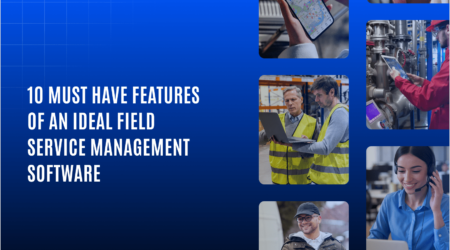What is Field Employee Tracking? Everything You Need to Know
Managing a team that’s always on the move is no easy task. Whether it’s sales reps hopping from one client to another, service technicians covering vast areas, or inspection officers spread across cities, field teams are everywhere. However, if you can’t see them, how do you manage them effectively? Therefore, that’s where field employee tracking steps in.
Gone are the days when phone calls and end-of-day reports were enough. Indeed, with real-time visibility becoming a basic expectation, field employee tracking empowers organizations to stay connected, productive, and proactive. Let’s break this down together!
Understanding Field Employee Tracking
Think of field employee tracking as your digital radar. Essentially, it helps businesses monitor where their field workers are, what they’re doing, and how efficiently they’re completing their tasks.
It’s not about surveillance; instead, it’s about support. Consequently, it is about giving teams the right tools and managers the right insights.
Why is it essential in field workforce management?
Here’s why field employee tracking is creating waves in every field-centric business:
1. Better Visibility, Smarter Decisions
Planning becomes precise when you can see where your team is in real-time. As a result, employee location tracking enables managers to allocate tasks based on proximity, avoid overlaps, and respond faster to urgent service requests. Furthermore, it allows for more strategic decision-making.
2. Accountability
Proper field staff tracking ensures that employees’ workdays are transparent. This, in turn, encourages self-discipline while reducing the need for constant calls and check-ins.
3. Performance Tracking Made Easy
How many client visits did the technician complete today? How long did each visit take? Fortunately, with field employee tracking, the answers are just a click away. In addition, performance trends can be easily monitored.
Real-World Scenarios Where It Works
Let’s bring this to life with a few examples.
1. A Sales Team on the Move
A regional sales head wants to know which sales representative is closest to a new hot lead. Therefore, with employee location tracking, they can assign the visit instantly—no waiting, no guessing.
2. A Utility Company Managing Technicians
Imagine a transformer fault reported in the city. In such a situation, tracking field staff helps dispatch the nearest available technician, ensuring quicker service and greater customer satisfaction. As a result, downtime is minimized.
A Healthcare Organization Running Home Visits
For doctors or nurses making home visits, field employee tracking helps optimize routes and track appointments, especially when lives are at stake.
The Benefits? Let’s Count Them
There’s a long list, but here are the highlights:
- Efficient Routing: By reducing travel time through efficient routing, employees can focus more on completing valuable tasks, thereby boosting overall output and efficiency.
- Accurate Attendance Tracking: Know who’s where, without any manual logs.
- Fraud Reduction: Eliminate false location entries, time theft, and ghost visits with verifiable data. Specifically, it provides undeniable proof of activity.
- Enhance Client Trust & Transparency: Timely and traceable actions by field personnel not only keep clients informed but also strengthen their trust over time.
- Optimized Planning & Resource Allocation: Historical data helps optimize future routes, predict resource demands, and ultimately make smarter business decisions.
Busting the Common Myths
Some say field employee tracking invades privacy. However, that’s a myth.
Here’s the truth:
Tracking during work hours and for work purposes is no different than having a supervisor in an office. Instead, it’s about optimizing operations, not controlling lives. In fact, many employees feel empowered by it. Consequently, they don’t have to justify their work every hour. The data speaks for them.
What to Look for in a Good Tracking Practice?
While this blog doesn’t push a product, here’s what you should keep in mind when adopting any field employee tracking system or workflow:
- Real-time task updates.
- Accurate location tracking.
- Easy mobile access.
- Simple reporting features.
- Data privacy and employee consent.
Ultimately, your field staff tracking process should be intuitive, ethical, and efficient.
Empowering the Frontline with Employee Location Tracking
Field employee tracking isn’t just a tool for management—it’s a shield for field teams, too. If something goes wrong on-site, managers know exactly where to send help. Conversely, if someone is putting in extra effort, it gets noticed automatically. Thus, it builds a culture of transparency, not tension. Therefore, it fosters a more supportive work environment.
Field Staff Tracking is Not Just for Big Enterprises
Think field staff tracking is only for large companies? Not even close. From local delivery businesses to independent contractors, anyone with a mobile team can benefit. Indeed, small teams often see the quickest ROI because the impact is direct and visible.
Wrap-Up: It’s Time to Track Smart
Let’s sum it up. It’s not about spying; rather, it’s about streamlining. The true goal is to support the field team more effectively, not to question them. And that’s exactly what field employee tracking does.
It connects the field and the office, transforms scattered data into sharp decisions, reduces guesswork, improves performance, and boosts customer satisfaction. Therefore, if you have a mobile workforce, this isn’t optional anymore. Ultimately, it’s the new backbone of field operations.
Final Word
Now you can know where your team is, without endless calls, without the frustration. With the right field employee tracking strategy in place, you’re not just managing a team—you’re leading one, with confidence and clarity.



